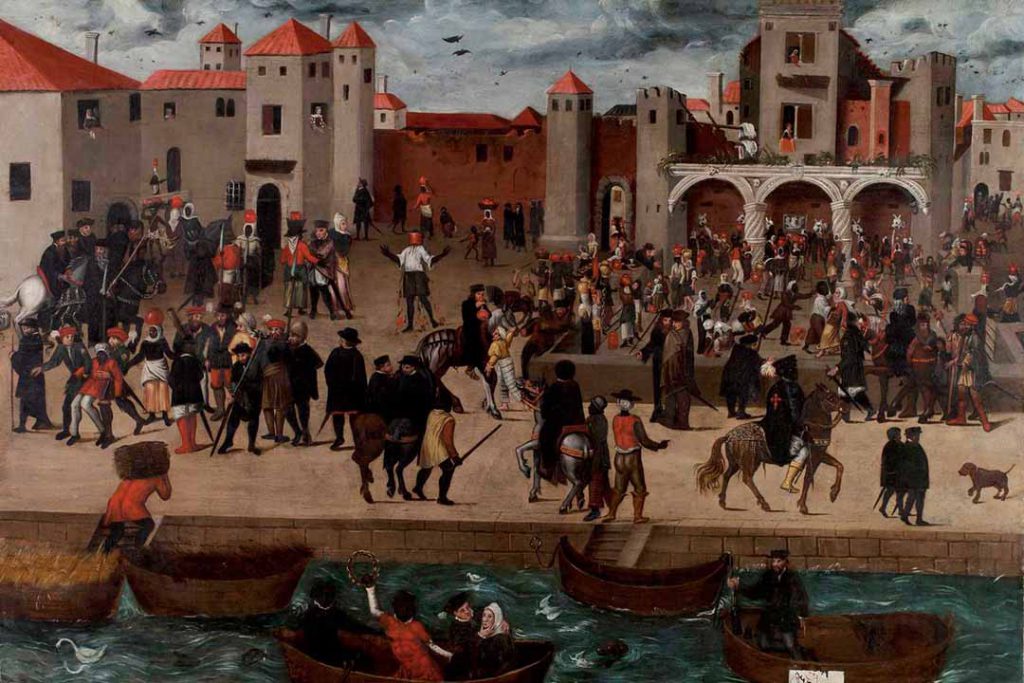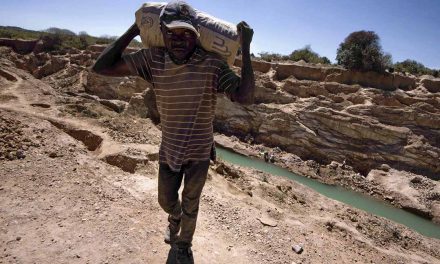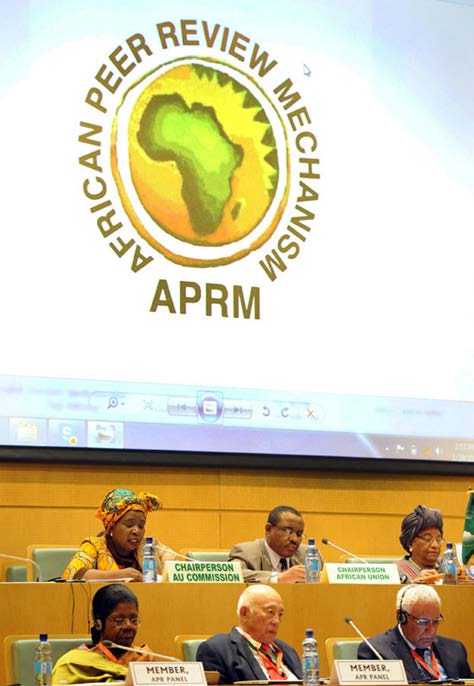Africa: the age of revolutions
A broader view of history reveals Africans to have been decisive actors in shaping global changes, both inside and outside the continent

One big difficulty historians of Africa face is the need to articulate historical changes in African experience through language accessible to a wide audience. Communicating widely means using concepts which are generally understood – yet these are usually Eurocentric, and not ideas which relate specifically to African historical experiences. Specialists have debunked the tired old western myth of African history as static. However, little of this has yet filtered into the mainstream. A good example is the so-called “age of revolutions”, the phrase coined by the historian Eric Hobsbawm to describe the decades between the American revolution in the 1770s and the Paris commune of 1848. Though the idea is Eurocentric in conception, Hobsbawm did recognise that this era also saw immense political upheavals in Africa. However, few historians have followed his lead.
African actors and societies were deeply connected to the Age of Revolutions. The way to approach Eurocentric concepts such as this may be not to discard them, but rather to expand their application to the world far beyond Europe, thus globalising historical concepts that are often used very narrowly. Connections between Africa and the world have been longstanding and usually grounded in reciprocal relationships. Indeed, they were already deep-rooted during the Age of Revolutions; by the late 18th century, many parts of Africa had had global links for centuries. East Africa was initially the best connected. As early as 150 BC, Chinese sources suggest the arrival of ambassadors from what is now Ethiopia. The Chinese connection to eastern Africa was significant. Chinese porcelain and grave goods have been found in Kilwa (Tanzania) and Madagascar from around 1,000 AD, brought by the dhow trade.
Dhows, and then camels, also brought traders from Basra in Iraq to do business in the Saharan region of the Fezzan, a desert region in what is now south-western Libya, in the 13th and 14th centuries. Meanwhile, West Africa did not take long to catch up. The mai (king) of Borno in north-eastern Nigeria first performed the haj to Mecca in the 11th century, and was followed by his successors, most famously by Mansa Musa of the Mali empire in the 1320s. An annual caravan of pilgrims would travel from Mali to Mecca during the 14th century. In the 15th and 16th century, Jolof ambassadors from Senegambia lived in Portugal, alongside those from the kingdom of Benin in southern Nigeria. Looking north, meantime, annual caravans of pilgrims would leave Timbuktu for Mecca well into the 18th century. Thus, by the eve of the American Revolution (1775-83), societies across Africa were globally connected.
Many African rulers had diplomatic envoys placed abroad. From the 16th century, Kongo, in northern Angola, often sent envoys to the Vatican. Dahomey – now the republic of Benin – sent frequent envoys to Brazil and Portugal from 1750 onwards. Borno, an independent Muslim kingdom that existed from the 8th century until the late 19th century, had regular diplomatic ties with the Ottomans in what is now Turkey. African rulers and people both shaped and were influenced by the rising tide of revolutionary movements that spread across the world from the 1770s onwards. Though the American revolution is much more famous, a movement of equal significance crystallised in Arabia during the 1770s. This was the Salafi Islamic reform movement, led by Muhammad ibn Abd al- Wahhāb, which would ultimately lead to the uniting of much of Arabia under the Ibn Saud family. The movement began in the 1740s, bringing in increasing numbers of followers.
By the 1770s, its influence was very strong and new leaders and followers joined all the time, including West Africans. Constant trading and migration to and from northern Africa had long influenced the growth of Islamic communities in West Africa. However, West African Muslims were Sufis, and now their journeys as pilgrims to Arabia brought about a reorientation of Sufi tenets along the lines of the Salafiya movement. In the 1790s, a movement of Islamic reform began in north-western Nigeria, led by a preacher called Uthman dan Fodio. This saw the establishment of the Sokoto caliphate, which dominated politics in the northern half of Nigeria throughout the 19th century. Gradually, an Age of Revolutions spread through West Africa as increasing numbers of people converted to Islam. This was a way of escaping enslavement; Muslims could not be enslaved by Islamic armies. It was also a way of escaping the control of warrior aristocracies practising African religions, who were often deeply embroiled in the trans-Atlantic slave trade.
This African Age of Revolution was therefore driven by the desire to overthrow an outdated aristocracy – just as the European Age of Revolution. It expressed the aspirations of a growing underclass keen to grasp the opportunities offered by expanding trade, and its desire to escape the influence of the slave traders. Just as there were reciprocal exchanges linking eastern and central Africa with the Mediterranean and Arabia, so were there linking West Africa with the Americas. Dahomey’s diplomatic links with Brazil were grounded in shared trading interests and, increasingly, the flow of Africans back and forth across the Atlantic. By the late 18th century, slaves from Dahomey who had managed to earn enough money to buy their freedom in Brazil began to return to their homeland in West Africa, bringing altered forms of religious practice, music and culinary life. Products from Dahomey such as cloth and kola nuts could be bought in the markets of Salvador da Bahia in north-eastern Brazil.
Many of the Fon people who returned to Dahomey acted as agents and traders in the growing trans-Atlantic trade, which had opened new markets for consumers on both sides of the Atlantic by 1800. Traditionally, historians have seen the connections between Africa and the world in this era as grounded exclusively in the Atlantic and Saharan slave trades. Of course, these were significant. Yet if they are placed in a much deeper context, a much fuller picture of the continent’s history emerges. The growth of diplomatic links, the rise of consumer and trading classes, and also the frustration which these classes experienced at the excesses and corruption of their aristocracies, all led to a wide ranging revolutionary movement, which took hold of much of central and western Africa from 1800 onwards. Thus, Africa was experiencing its own age of revolutions just as the bourgeois revolutions against the European aristocracy were taking hold in Europe and America. The impact of these interconnections grew year by year.
By 1823, military expansion by the Sokoto caliphate founded by Uthman dan Fodio led to the fall of the Yoruba empire of Oyo in southern Nigeria. Slaves rushed to convert to Islam and then attacked the property of their former masters, seeing the new movement as an opportunity to reverse decades of inequality. This in turn precipitated huge changes in Dahomey, which was a tributary to Oyo. West Africa’s revolutionary era was just as much a matter of overturning an old, reactionary elite as was Europe’s. Africa’s 18th century is still often understood as characterised by the violence of the slave trade and a growing inequality in economic exchanges with the wider world. However, a deeper look at the continent’s history shows African actors taking decisive roles in driving forward the revolutionary changes which have come to characterise this period of history as a whole. A broader view of history thus shows Africa and Africans as decisive actors in shaping global changes both inside and outside the continent.
Toby Green is a historian at King’s College London. He is the author of A Fistful of Shells: West Africa from the Rise of the Slave Trade to the Age of Revolution (2019). He has organised events in collaboration with institutions in Angola, Ghana, Guinea-Bissau, Mozambique, Sierra Leone and Gambia.












